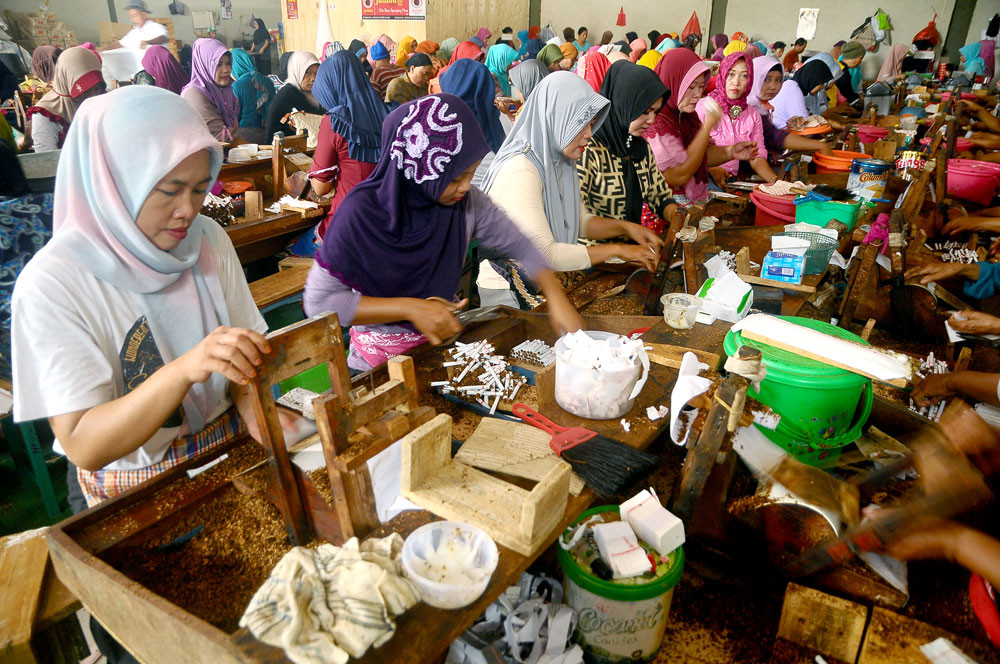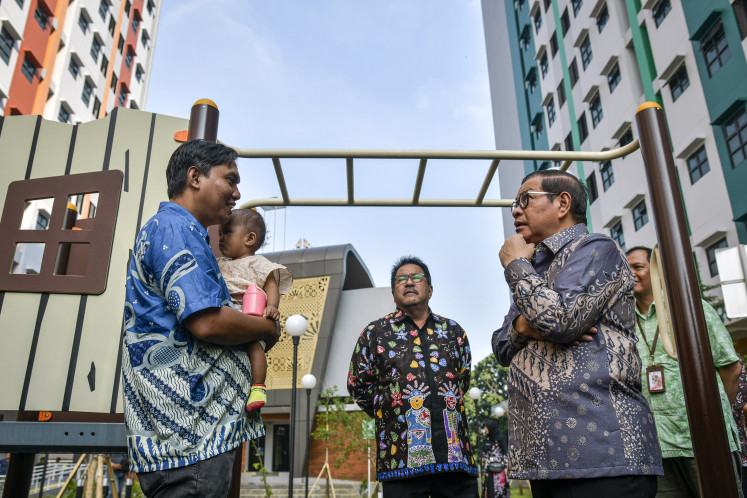Popular Reads
Top Results
Can't find what you're looking for?
View all search resultsPopular Reads
Top Results
Can't find what you're looking for?
View all search resultsHelping low-wage workers
The extension to the wage subsidy can help workers in two ways: through direct disbursement of the aid to beneficiaries' bank accounts, and by encouraging companies to sign up their employees to the workers social security scheme.
Change text size
Gift Premium Articles
to Anyone
T
he government’s decision last week to continue providing subsidies this year for formal workers who receive monthly wages of less than Rp 3.5 million (US$250) should be welcomed as another concerted effort to boost private consumption, which contributes over 55 percent to gross domestic product.
The continuation of the wage subsidy, amounting to Rp 1 million per worker this year, became more urgent during the second surge of the coronavirus in the past two months. The subsidy will become part of the massive social assistance program, including the Family Hope scheme, basic needs assistance, electricity discounts, tax breaks, a special MSME credit scheme and the preemployment card and training program that prioritizes people who have lost their jobs.
We do not think the additional spending will adversely affect the budget deficit, but its impact on household consumption will be immediate. This is because, in contrast from last year that saw almost Rp 38 trillion in wage subsidies disbursed to over 15.5 million workers, this year’s wage subsidy will be given only to a selected number of workers in the nonessential sectors in those cities and regencies classified as level 4 of the public mobility restrictions (PPKM), the areas with the highest transmission rates. Initial estimates put the number of beneficiaries at only around 8 million workers and a total subsidy spending of Rp 8 trillion.
As part of the government’s social safety net programs, the wage subsidy is designed to minimize the impacts of the mobility restrictions on businesses as well as laid-off and low-wage workers in sectors such as consumer goods, light industry and services, excluding health and education as determined by the Manpower Ministry.
The wage subsidy also will help export-oriented industries to continue their operations, as they could risk losing longtime customers (buyers) if they failed to meet their delivery schedules. Seeking new buyers will very tough now.
The beauty of the subsidy is that its disbursement was able to run very smoothly without any problems like misallocations, which have frequently occurred in the distribution of other social assistance due to inaccurate or absent data. This is because the wage subsidy is transferred directly to the bank accounts of the beneficiary workers, who are already registered with BPJS Ketenagakerjaan (Workers Social Security Agency).
The subsidy is thus not only well targeted, but can also be an incentive for companies to register their employees with the agency. Employers will increasingly come to realize that government policy as regards workers’ welfare and incentives will target only BPJS Ketenagakerjaan participants. Most companies still hesitate to sign up their workers with the agency, as they see the insurance premiums primarily as an addition to their operating costs.
We also do not believe that the wage subsidy policy discriminates against the estimated 74 million informal workers. Besides, it would be rather impossible to help all the workers in the informal economy due to the complete absence of data. We assume these workers should be covered anyway by one of the many components of the government’s social safety net programs.










